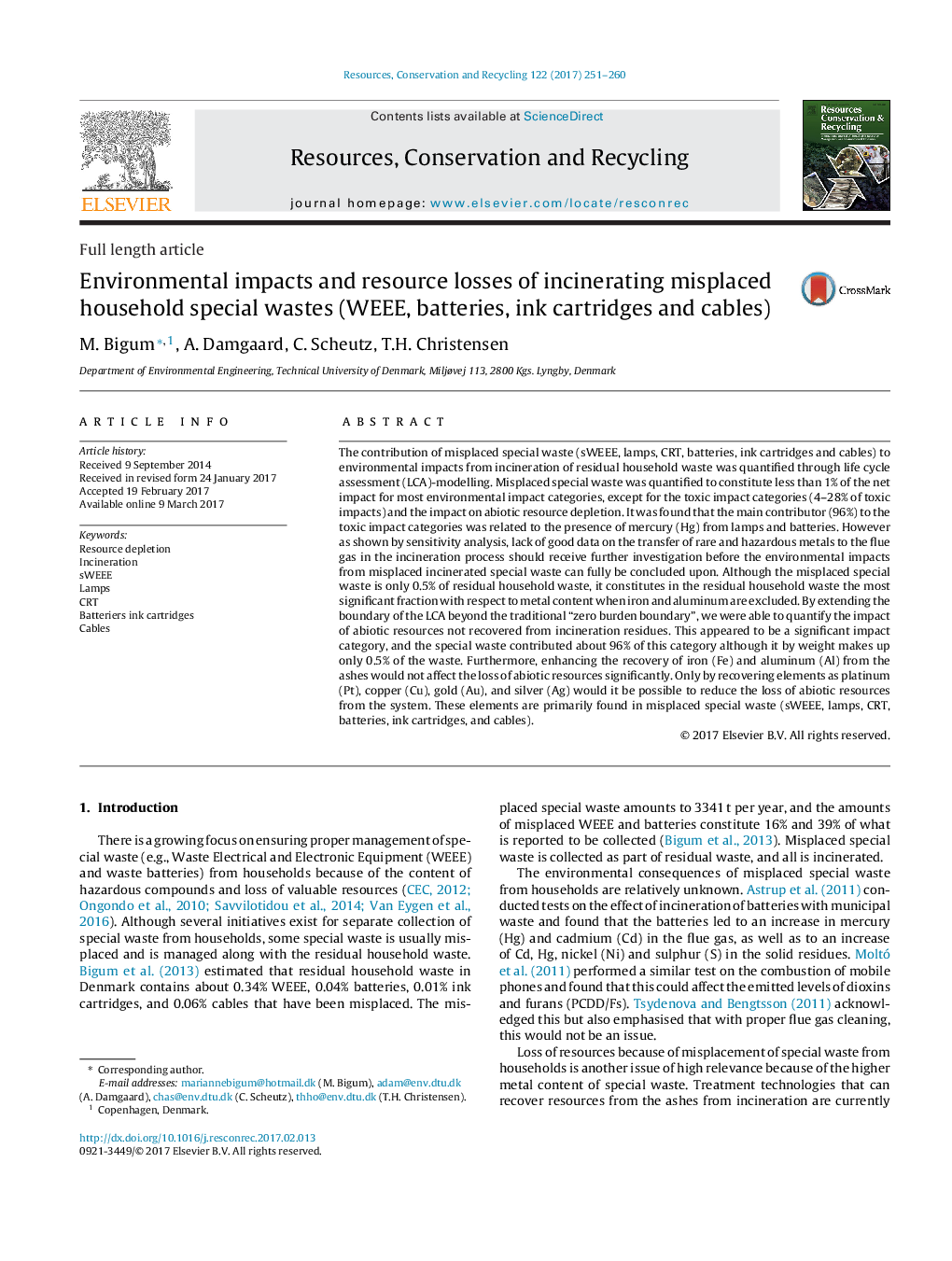| Article ID | Journal | Published Year | Pages | File Type |
|---|---|---|---|---|
| 5118794 | Resources, Conservation and Recycling | 2017 | 10 Pages |
â¢Misplaced special waste (WEEE, batteries, cables etc.) was included in an environmental assessment of incineration of residual household waste (RHW).â¢The elemental composition of misplaced special waste with RHW was estimated using available literature.â¢A new approach for modelling resource depletion (the resource burden approach) was proposed and used.â¢Burdens from unrecovered elements contribute significantly. 96% of the loss of abiotic resources derive from the special waste while only constituting 0.5% of the RHW.
The contribution of misplaced special waste (sWEEE, lamps, CRT, batteries, ink cartridges and cables) to environmental impacts from incineration of residual household waste was quantified through life cycle assessment (LCA)-modelling. Misplaced special waste was quantified to constitute less than 1% of the net impact for most environmental impact categories, except for the toxic impact categories (4-28% of toxic impacts) and the impact on abiotic resource depletion. It was found that the main contributor (96%) to the toxic impact categories was related to the presence of mercury (Hg) from lamps and batteries. However as shown by sensitivity analysis, lack of good data on the transfer of rare and hazardous metals to the flue gas in the incineration process should receive further investigation before the environmental impacts from misplaced incinerated special waste can fully be concluded upon. Although the misplaced special waste is only 0.5% of residual household waste, it constitutes in the residual household waste the most significant fraction with respect to metal content when iron and aluminum are excluded. By extending the boundary of the LCA beyond the traditional “zero burden boundary”, we were able to quantify the impact of abiotic resources not recovered from incineration residues. This appeared to be a significant impact category, and the special waste contributed about 96% of this category although it by weight makes up only 0.5% of the waste. Furthermore, enhancing the recovery of iron (Fe) and aluminum (Al) from the ashes would not affect the loss of abiotic resources significantly. Only by recovering elements as platinum (Pt), copper (Cu), gold (Au), and silver (Ag) would it be possible to reduce the loss of abiotic resources from the system. These elements are primarily found in misplaced special waste (sWEEE, lamps, CRT, batteries, ink cartridges, and cables).
